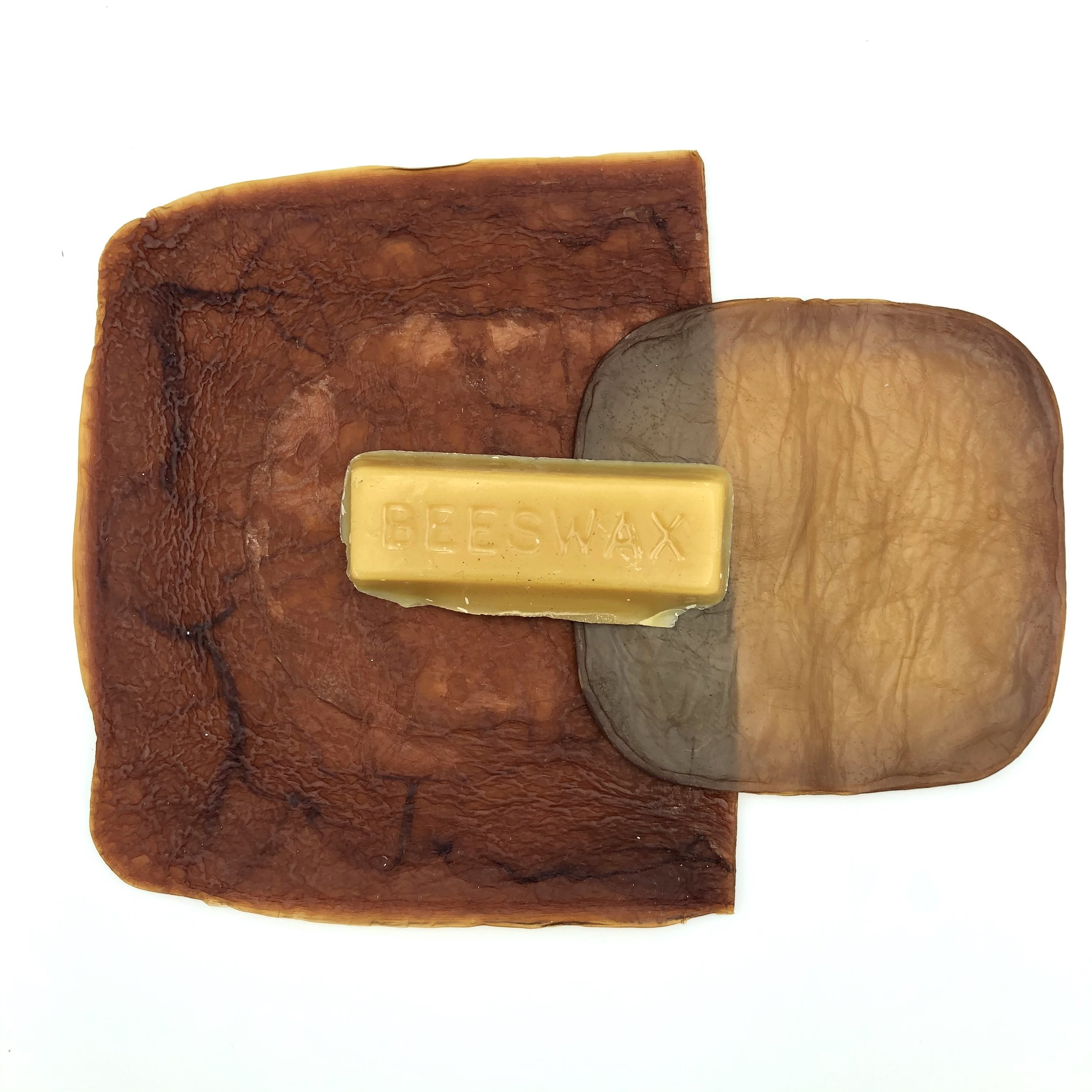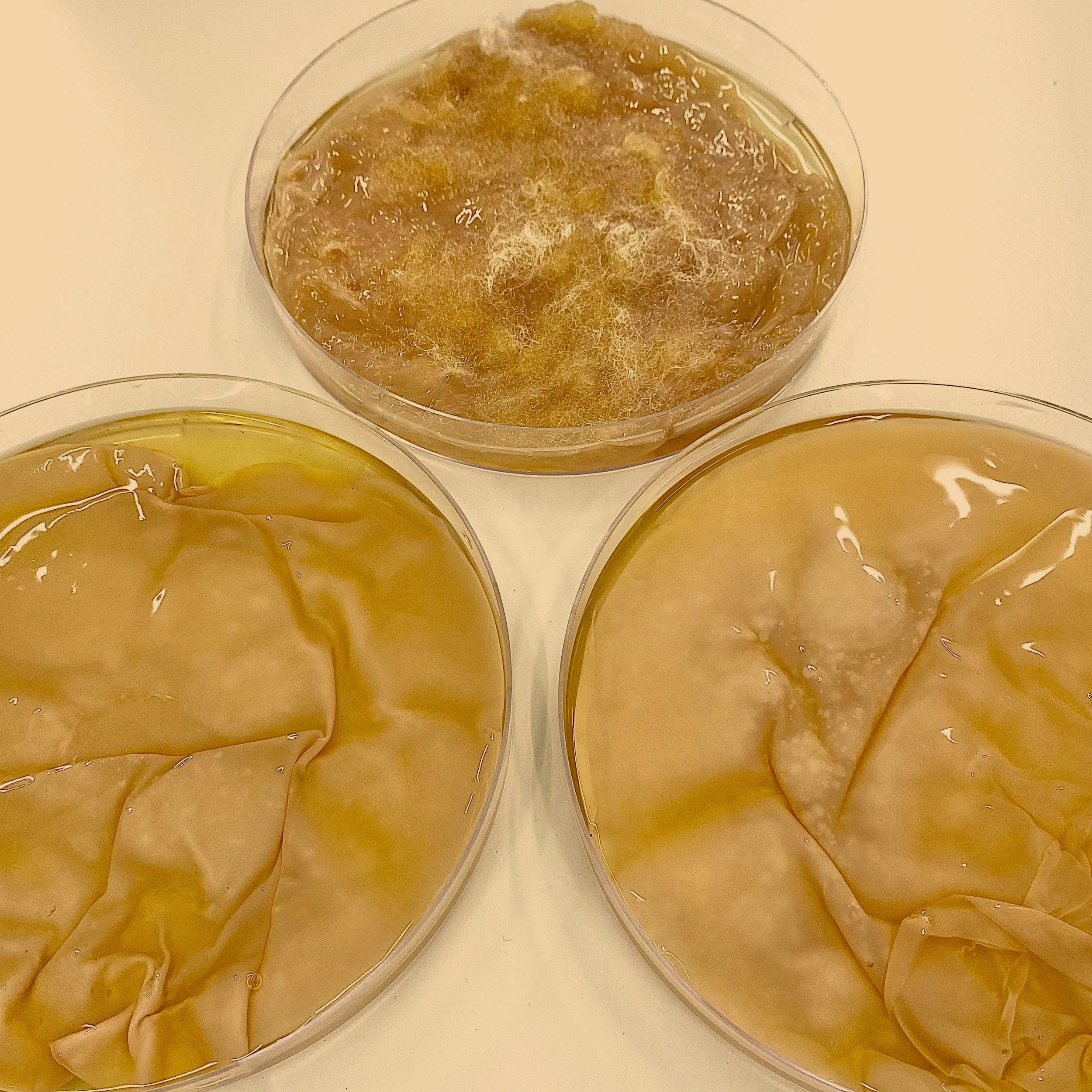
Microbial Matters: Exploring Bacterial Cellulose as a Sustainable Material Alternative
The Microbial Matters project investigates the potential of bacterial cellulose as a sustainable material alternative for the creative industries. As human material consumption continues to surpass the planet’s available natural resources, it is clear that new solutions are needed—ones that do not come at further environmental cost. Nature itself has long been a source of inspiration, developing sophisticated ecosystems and microstructures that balance function and aesthetics to support life. The question now is whether we can learn from and collaborate with nature to create materials that meet human needs while also restoring ecological balance.
The newly emerging field of bio-design seeks to address this imbalance by harnessing biology to develop regenerative materials. Microbial Matters explores bacterial cellulose as a leading example of this shift in material thinking, demonstrating its potential for diverse applications.
Bacterial cellulose is produced during the fermentation of a SCOBY—a symbiotic culture of bacteria and yeast—commonly associated with kombucha production. This process results in the formation of a dense, skin-like cellulose layer, which exhibits unique material properties in both its wet and dry states. Freshly harvested, it has a soft, flexible texture akin to human skin. When dried, it transforms into a strong, lightweight, and biodegradable material, with properties comparable to leather, paper, or textiles.
The Microbial Matters project, completed in January 2022 as part of Sarah’s final MSc thesis, explored two distinct cultivation methods:
Kitchen Chemistry Approach – Using household objects and natural food sources, this method demonstrated how bacterial cellulose could be grown with minimal equipment, making it accessible for designers, artists, and makers interested in biomaterial exploration.
Bio-Fabrication in a Microbiology Lab – With support from De Montfort University’s Microbiology Department, isolated bacterial strains were cultivated in a controlled environment to explore scalability and refinement of the material for specialized applications.
Through both approaches, the research examined how bacterial cellulose can be manipulated, enhanced, and applied in creative and functional contexts. The project’s outcomes were open-sourced, ensuring that others can build upon this research to further develop bacterial cellulose as a viable material alternative. These research findings also informed the proposal for research into waste wood and natural binding agents funded by Cranfield University in 2024.
Microbial Matters | 09.2022 | Sarah King






